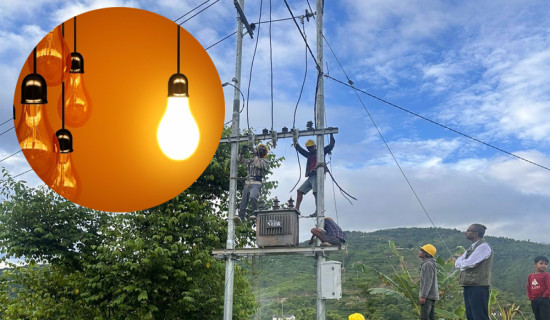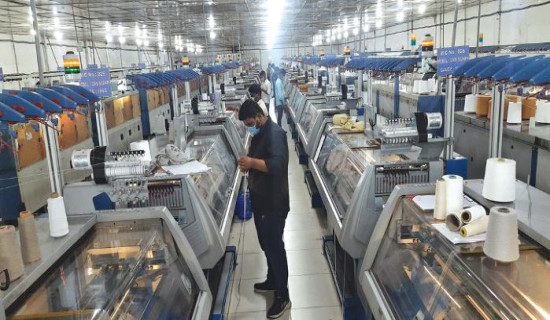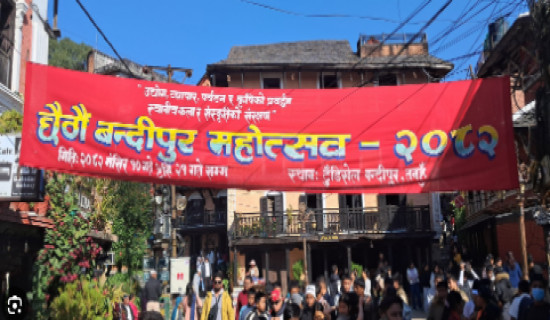- Wednesday, 26 November 2025
Fighting Against The Growing Heat
Nepal, a country often known for its cool, mountainous terrain and temperate climate, is facing an unexpected and alarming adversary in the form of heat waves. One of the most severe and life-threatening conditions caused by prolonged exposure to high temperatures is heat stroke. This phenomenon, traditionally associated with more arid and tropical regions, is becoming increasingly common and severe in Nepal, posing significant threats to public health, agriculture, and overall societal well-being.
Despite its seriousness, awareness about heat stroke remains surprisingly low, and many people still are unprepared to recognise or respond to its symptoms. The human body is not equipped to handle prolonged exposure to extreme heat, leading to a rise in cases of heat exhaustion and heat stroke, and can be fatal if left untreated. Additionally, the healthcare infrastructure in many parts of Nepal is not adequately prepared to handle the surge in heat-related illnesses, exacerbating the problem.
Phenomenon
Heat stroke occurs when the body's temperature regulation system fails, often due to prolonged exposure to high temperatures or physical exertion in hot environments. Unlike heat exhaustion, which can usually be managed with rest and hydration, heat stroke is a medical emergency that requires immediate attention. Symptoms include a high body temperature (above 103°F or 39.4°C), altered mental state, nausea, rapid pulse, and, in severe cases, loss of consciousness. The dangers of heat stroke cannot be overstated. Without prompt treatment, it can lead to serious complications such as organ failure, brain damage, and even death. The most vulnerable people are elderly, children, and individuals with pre-existing health conditions. However, even healthy, active individuals can fall victim to heat stroke under those conditions.
Climate change has caused extreme weather patterns worldwide, and Nepal remains no exception. The country is witnessing more frequent and severe heat waves, particularly in the southern plains and urban areas. These heat waves are not merely uncomfortable; they are deadly. Heat stroke, the most severe form of heat-related illness, has surged as a result. The connection between climate change and the rise in heat strokes in Nepal is direct and undeniable. As global temperatures rise, so do the local temperatures, especially in areas unaccustomed to extreme heat. The Tarai region, for instance, has recorded unprecedented temperatures, putting enormous stress on both people and the environment.
Moreover, the socioeconomic disparities in Nepal mean that the most vulnerable populations often bear the brunt of the impacts. In rural areas, where access to resources and infrastructure is limited, communities struggle to cope with the effects of extreme heat. Urban areas, particularly the densely populated Kathmandu Valley, face their own set of challenges, including the urban heat island effect, which exacerbates the impact of heat waves. Despite its dangers, public awareness about heat stroke is limited. Many people are unaware of the symptoms, risk factors, and necessary first aid measures. This lack of knowledge can significantly delay critical intervention, exacerbating the condition's severity. Public health campaigns must prioritise education about heat stroke, emphasising prevention, early detection, and emergency response.
Preventing heat stroke starts with understanding and mitigating risk factors. Staying hydrated, wearing lightweight clothing, and avoiding strenuous activity during peak heat are primary precautions. Additionally, people must learn to recognise the early signs of heat-related illnesses and take prompt action to cool down and rehydrate. Therefore, personal responsibility is only part of the solution. Governments and community based organisations must also play a role in protecting citizens from extreme heat. Urban planning should prioritise green spaces, which can reduce the urban heat island effect. Workplace regulations should ensure that employees, particularly those in outdoor or high-heat environments, have adequate breaks and access to hydration.
Nepal’s healthcare infrastructure, already overstretched is ill-equipped to handle the increasing number of heat stroke cases. Health centres in rural areas often lack the necessary facilities and medical supplies to provide adequate treatment. Many Nepalis are unaware of the symptoms or the immediate actions required to treat it, leading to delayed medical attention and increased fatalities.
Collaboration
Addressing the threat of heat waves in Nepal requires a multifaceted approach. Public awareness campaigns are essential to educate citizens about the dangers of extreme heat and the importance of hydration, proper clothing, and recognizing symptoms of heat-related illnesses. Local governments in collaboration with local youth clubs must act now to ensure access to clean drinking water, and plan for more green spaces especially in high-risk areas. From a policy perspective, it is imperative for the government to incorporate climate resilience into its development plans. This includes improving urban planning to reduce heat absorption, and promoting green spaces.
Furthermore, international cooperation and funding can play a critical role in supporting Nepal’s efforts to combat the effects of climate change. Hence, heat stroke is a preventable but potentially deadly condition that demands greater public awareness and proactive measures. As global temperatures continue to rise due to climate change, the incidence of heat-related illnesses is likely to increase. The urgency of this issue cannot be overstated. Thus, with appropriate public awareness campaigns, and by strengthening healthcare systems and implementing climate-resilient policies, we can better protect our people from the dangers of extreme heat.
(Dr. Lohani is the executive director at the Health Concern. lohanis@gmail.com)

















